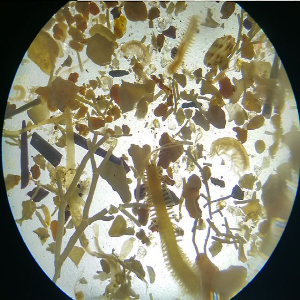Macrobenthos of lagoon ecosystems: a comparison in vegetated and bare sediments

Accepted: 8 March 2023
HTML: 81
All claims expressed in this article are solely those of the authors and do not necessarily represent those of their affiliated organizations, or those of the publisher, the editors and the reviewers. Any product that may be evaluated in this article or claim that may be made by its manufacturer is not guaranteed or endorsed by the publisher.
Authors
The classic paradigm, not always unequivocal though, that seagrass macrobenthic abundance and diversity are greater than those in adjacent unvegetated areas, was tested in a Mediterranean lagoon for which evidence is lacking. We compared the community structure and species composition of macrobenthic assemblages in three distinct areas of the Mistras Lagoon (Sardinia, Italy) dominated by i) the seagrass Cymodocea nodosa (Cym), ii) mixed-macrophyte/detritus (Mix), and iii) unvegetated sediments (Unv). Samplings were conducted in each area twice in spring (April and May) and twice in autumn (October and November) 2010. Multivariate analyses showed significant differences among the three areas and a marked separation between the two vegetated (Cym and Mix) and the unvegetated (Unv) areas. The top discriminating species, indicated by SIMPER analysis, were characterized by direct development lacking free living larvae. They included marine species, e.g. Cerithium lividulum, Microdeutopus gryllotalpa, Loripes orbiculatus and Gammarus aequicauda, at Cym vs Mix, whereas the pair discrimination of the areas Cym vs Unv and Mix vs Unv mostly depended on the marine Abra tenuis, the opportunistic Chironomidae and Capitella capitata, and the brackish Hydrobia acuta. Both vegetated areas showed a higher species number than the unvegetated area. Differently, abundance was higher in Unv than in Cym and Mix in all sampling dates, most notably in spring likely because of reproductive events, due to both opportunistic (C. capitata, chironomids) and halolimnobic (H. acuta, Cerastoderma glaucum) species. Overall, the present study demonstrated the importance of biological factors in structuring the macrobenthic assemblages of the Mistras Lagoon. Habitat-forming phanerogams hosted species-rich assemblages, species-specific reproductive cycles and adaptive strategies contributed to drive species colonization and abundance distribution. Both vegetated and unvegetated patches were found to contribute greatly to the local-scale heterogeneity of the habitat, highlighting the importance of coastal lagoons as hotspots for benthic biodiversity. For these reasons, lagoons must be considered major targets for conservation measures.
How to Cite

This work is licensed under a Creative Commons Attribution-NonCommercial 4.0 International License.
PAGEPress has chosen to apply the Creative Commons Attribution NonCommercial 4.0 International License (CC BY-NC 4.0) to all manuscripts to be published.


 https://doi.org/10.4081/aiol.2023.11124
https://doi.org/10.4081/aiol.2023.11124








